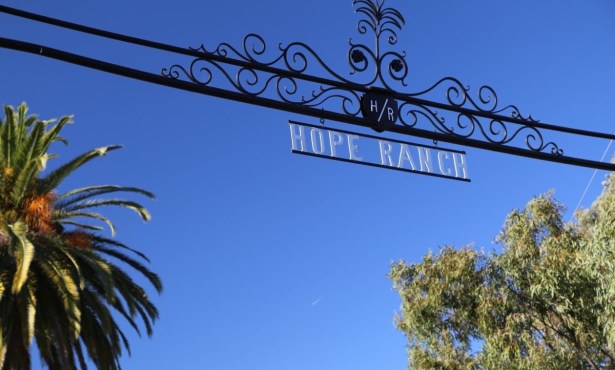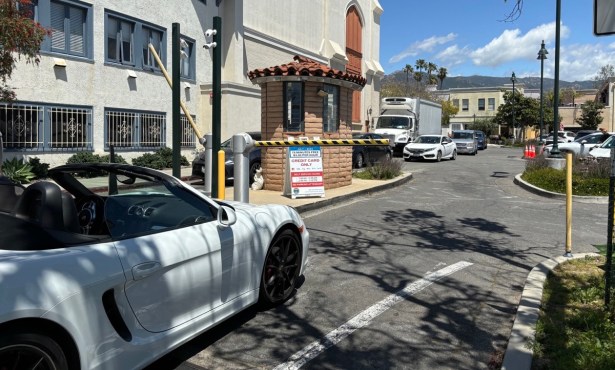Nature Deficit Disorder
A Sense of Place
During the past several months, one primary theme of this column has been the importance of a sense of place. This article builds on the theme by describing an important problem — ecological illiteracy.
There is no place on earth with more resources than this community. This region can forge a more sustainable and intimate relationship between human beings and the natural world — the mountains, river and creeks, and ocean. But it will require a serious commitment toward a new era of greater ecological awareness.

Wild salmon can navigate through oceans and fresh water because of their well-developed sensual memory of place. This sense of place drives the salmon deeper into the watershed. From fresh water to the ocean and back again to the creek of its origin, the sense of place and smell drives the salmon upstream to cross the artificial and natural boundaries that exist along its way. In reproduction, this sense is passed on from one generation to another. In Northern California, indigenous people refer to the king salmon variously as “Lightning Following One Another,” “Chief Spring Salmon,” “Two Gills on Back,” “Quartz Nose,” and “Three Jumps.”
Our human capacity to make connections between mountains, rivers, and the sea is also an important factor that contributes to our capacity to sustain our community. The problem today is that we rarely understand these connections, nor are we willing to nurture and protect these ecological and cultural relationships that sustain our economies. We enter our machines (car or bus) and quickly become passengers through a world we no longer care to understand.
We view the world through the lens of a mechanical and electronic eye (e.g., the computer, television, and camera lens). We watch the bombing of a foreign landscape on the television. This vision of war is mediated by several machines that separate the deadly impacts of war from the virtual illusions produced by machines. The war “games” depicted on the TV screen are illusions previously played out in computer games or on video, while our ability to feel the pain of war has been diminished.
The robot on Mars may be a machine, but its mechanical appendages, its mission, and its electronic vision are “remotely” controlled by human beings. Humans via the machine are on Mars. The mass media first convinced us that the imaginary was real, and now they are convincing us that the real is imaginary.
The more reality the TV screen shows us, the more cinematic our everyday world becomes. The reliance on technology can change our relationship to nature and society. Real “nature” is becoming imaginary — even as natural entities depicted on the TV screen go extinct.
[We view the Yellowstone wilderness through the car window or attempt to capture Old Faithful on film, but the unique smells, dangers, and complexity of the Yellowstone ecosystem cannot be captured on film or video. People search for the perfect machine while the loss of place permeates modern society. We continue to turn to the mass media to represent nature rather than interacting and participating in a natural world.]
As we go further into an electronic and digital era, the separation of humanity from place seems inevitable. Children are more familiar with a cell phone or iPhone that depicts images of an imaginary nature than they are with a species of oak and chaparral that are part of their landscapes. This disconnect is reflected in what psychologists refer to as the problem of “nature deficit disorder”. Richard Louv described this disorder in his book Last Child in the Woods. He argues that a range of behavioral problems are developing as a consequence of our lack of experience with the natural world and what he refers to as the “the lure of the screen.” His analysis is limited to children, but I believe that nature deficit disorder and its consequences has become part of everyday life in urban and industrialized societies.
Each generation is brought up to a different environmental context. With each generation, the diminishment of the natural world around us diminishes our shared ability to learn from other animals and our natural surroundings, and to adapt. We become more digitally connected but lose our capacity to relate to community.
One need only look to society’s treatment of a free-flowing river. A river’s water is perceived as a resource for human use — natural capital. The definition of a natural resource is something in nature redirected for human use. During the past 60 years, this instrumental value of a river has contributed to the development of some 75,000 dams in the United States or the literal rearranging of the waters of the continent. In the politics of hydroelectric power development and irrigation networks, the more-than-economic values of the natural world are silenced.
Each dam resonates with the technological treatment of nature as a factory. Drowning Hetch Hetchy to provide power for San Francisco redirected the downhill energy (potential energy being converted in nature into kinetic energy) into paths available for urban use (electric energy). Dams reflect an uncritical social reliance on modern technology, and a form of spatial apartheid — each dam separates unique ecological places (riparian areas, watersheds) to support developments that are mechanical yet human (irrigation, grain transportation, hydropower, urban development). The dams impound the river, and the awe of the spring runoffs is gone. The river itself is transformed into what the historian Richard White calls “an organic machine, a virtual river.” The virtual river can be turned on or off.
Ultimately, the denaturing of nature coincides with a dehumanized society, people disconnected from the natural world and from one another. The loss of what it means to be a human being unfolds along with the death of nature.
The cultural and social aspects of this denaturing effect are dramatic. Society faces a crisis in education, poverty, and homelessness. Our political and economic elite fail to recognize the connection between ecological decay and cultural impoverishment. A 1995 report by the U.S. Department of the Interior states that every ecosystem in the U.S. is either threatened or endangered — the threat is no longer the loss of a single species of plant or animal. Meanwhile, one out of five children in the U.S. lives at the poverty level, and these children live in regions that are in ecological decline. In cities, one out of every four homeless is a child. This scenario is being played out worldwide as material poverty accompanies what we often celebrate as technological progress.
To deny, according to Webster’s New Collegiate Dictionary, is “to disclaim connection with or responsibility for: disavow.” As individuals, and as members of institutions, we deny the importance of place in shaping culture and society. Our treatment of predators like the wolf, coyote, bear, and bobcat is reflected in the language of bureaucratic resource management — the wolf is referred to as a “predator control unit,” “game unit,” “management tool,” “control action,” “reduction strategy,” and is exterminated when it does not suit a given objective. Viewed as a tool, the wolf loses its character as an ecological being; the wolf has no ecological significance in itself. Lacking in the language is an understanding of the predator as an important player in diverse ecosystems. Lacking in the language of the bureaucrat is recognition of the needs of the wolf in relation to human beings.



